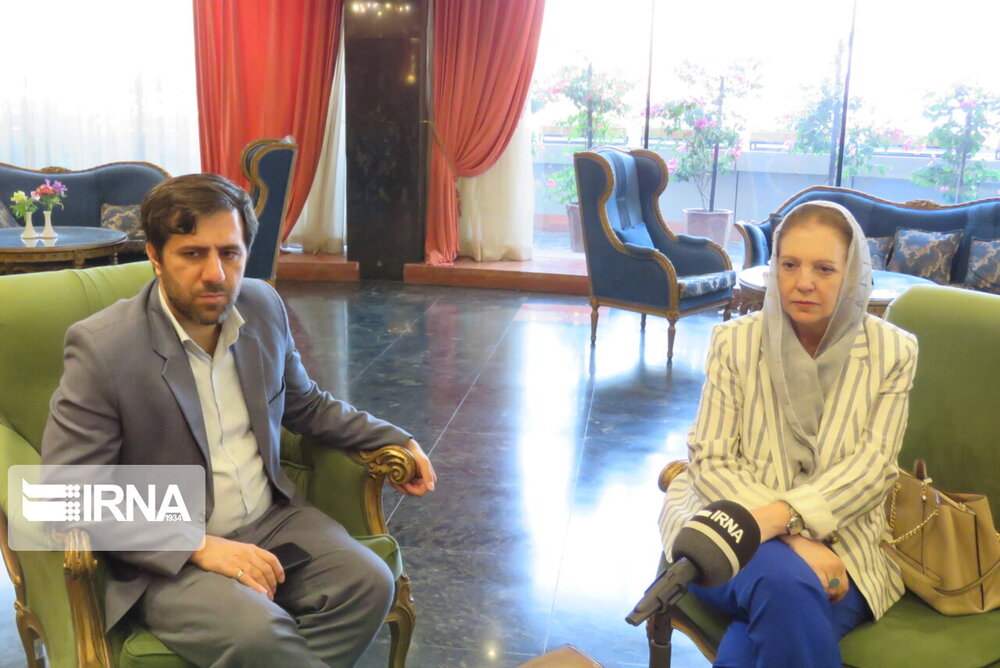INSUBCONTINENT EXCLUSIVE:
TEHRAN-- On Sunday, Syrias Minister of Culture Lubanah Mshaweh checked out a variety of historical sites in Shiraz and its environments in
southern Iran, IRNA reported.Historically, Persepolis has actually been a center for establishing nationwide cultural ties, showcasing many
elements of femaless and human rights, the minister said.In addition to boosting human worths, visiting it can help improve the quality of
life these dayss citizens, she added.The minister likewise checked out Hafezieh, a major tourist area where renowned Persian poet Hafez is
laid to rest in addition to Saadieh, which is the mausoleum of the distinguished Persian poet Saadi Shirazi
On this trip, I was interested by the crowds of people checking out the burial places of Persian poets Hafez and Saadi, and all of them
respectfully acknowledged Iranian poets throughout their check out, she noted.It appears that Hafez and Saadi are institutionalized in
Iranian life and can play a considerable role in the advancement of cultural relations between Iran and Syria, in addition to other
countries with a cultural affinity for Iran, she mentioned.Visiting Naqsh-e Rostam, an Achaemenid necropolis near Persepolis, was also a
part of the ministers journey
As I checked out Naqsh-e Rostam, I saw a number of ladies repairing and bring back ancient and historic works, showing that ladies believe
more specifically and technically about repair work
Many cultural and historical works in Syria date back to the seventh millennium BC, demonstrating that there prevail cultural roots in
between Iran and Syria, she concluded.Persepolis, likewise referred to as Takht-e Jamshid, whose splendid ruins rest at the foot of Kuh-e
Rahmat (Mountain of Mercy), was the ritualistic capital of the Achaemenid Empire
It is positioned 60 kilometers northeast of the city of Shiraz in Fars Province.The royal city of Persepolis, which ranks amongst the
archaeological sites which have no comparable, considering its unique architecture, urban preparation, building and construction innovation,
and art, was burnt by Alexander the Great in 330 BC apparently as revenge versus the Persians because it seems the Persian King Xerxes had
burnt the Greek City of Athens around 150 years earlier.The citys enormous terrace was started about 518 BC by Darius the Great, the
On this balcony, succeeding kings put up a series of architecturally stunning palatial structures, among them the huge Apadana palace and
the Throne Hall ( Hundred-Column Hall )
This 13-ha ensemble of majestic techniques, monumental stairways, throne spaces (Apadana), reception spaces, and dependences is classified
amongst the worlds biggest archaeological sites.Persepolis was the seat of the federal government of the Achaemenid Empire, though it was
created primarily to be a showplace and spectacular center for the receptions and festivals of the kings and their empire.Situated near
Persepolis, the Achaemenid necropolis of Naqsh-e Rostam, suggesting Picture of Rostam is named after a legendary Iranian hero which is
most commemorated in Shahnameh and Persian mythology.One of the marvels of the ancient world, Naqsh-e Rostam embraces four tombs where
Persian Achaemenid kings are laid to rest, believed to be those of Darius II, Artaxerxes I, Darius I, and Xerxes I, although some historians
are still debating this.There are gorgeous bas-relief carvings above the burial place chambers that are similar to those at Persepolis, with
the kings basing on thrones supported by figures representing the subject nations below
There are likewise two comparable tombs positioned on the facilities of Persepolis that probably belong to Artaxerxes II and Artaxerxes
III.Beneath the funerary chambers are dotted with seven Sassanian-era (224-- 651) bas-reliefs cut into the cliff that portrays vibrant
scenes of imperial conquests and royal ceremonies.ABU/ AM

